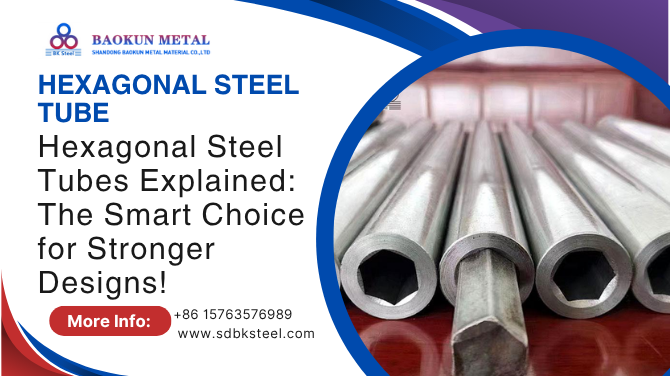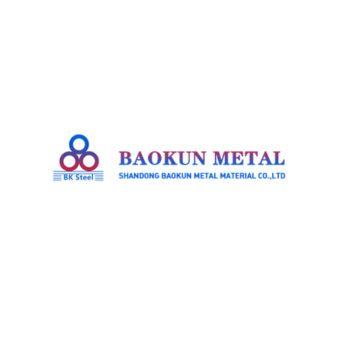Notifications

12 minutes, 17 seconds
-22 Views 0 Comments 0 Likes 0 Reviews

In the world of structural engineering and modern design, the materials we choose play a crucial role in determining the strength, durability, and functionality of the final product. One material that has been gaining significant attention for its versatility and superior performance is the hexagonal steel tube. This seemingly simple yet innovative shape has revolutionized industries by providing enhanced strength, space efficiency, and aesthetic appeal. Whether you're designing a building framework, a mechanical system, or any structural application, opting for a hexagonal steel tube can make all the difference.
The shape of a tube might seem like a simple decision when it comes to material selection, but it’s the geometry of the tube that often determines the overall strength, stability, and practicality of the structure. Traditionally, round steel tubes have been the standard for many years due to their inherent strength and ease of production. However, as industries have evolved, so too have the materials we use to meet increasingly complex design requirements.
Enter the hexagonal steel tube—a game-changing innovation that blends the strength of steel with the unique advantages of its six-sided shape. This tube offers more than just an aesthetically pleasing look. Its unique geometry provides superior load distribution, greater resistance to deformation, and more efficient use of space when incorporated into various designs. As industries demand more efficient, cost-effective, and durable materials, the hexagonal steel tube has gained traction for its ability to meet these needs.
A hexagonal steel tube is a tube that features six flat sides, forming a hexagonal shape. This distinct form offers several benefits, such as enhanced structural strength, resistance to impact, and better stacking capabilities. These tubes can be used in a wide range of applications, from architectural designs to mechanical systems, owing to their ability to efficiently handle stress and load.
Hexagonal tubes are typically made from high-quality steel, ensuring that they maintain the necessary strength and durability for demanding applications. Whether they are used in construction, automotive, or industrial machinery, these tubes are known for their robustness and versatility. As industries face growing demands for more efficient, lightweight, and stronger designs, hexagonal steel tubes are emerging as the go-to material.
Hexagonal steel tubes offer a range of advantages that make them the ideal material for various applications. Whether you're in the process of designing structural components or seeking materials for specific engineering challenges, the benefits of choosing hexagonal steel tubes are clear. Let’s explore some of the primary reasons why more professionals are incorporating them into their designs:
1. Enhanced Strength and Durability
One of the most significant benefits of hexagonal steel tubes is their strength. Due to their unique geometric structure, these tubes are designed to distribute stress more evenly compared to traditional round tubes. The six-sided shape provides more points of contact with external forces, helping to disperse pressure and reducing the risk of deformation or failure. This makes them ideal for applications that require high-strength materials, such as building frames, bridges, and heavy-duty machinery.
Additionally, hexagonal steel tubes are made from high-quality steel, ensuring exceptional resistance to corrosion, wear, and impact. This durability ensures that the tubes maintain their structural integrity over time, even under harsh environmental conditions.
2. Space Efficiency
Another reason why hexagonal steel tubes are becoming the material of choice is their space-efficient design. Unlike round tubes, hexagonal tubes can be packed more tightly together, reducing the amount of wasted space in a given area. This is especially beneficial in applications where maximizing space is critical, such as in machinery design, industrial frameworks, or even furniture manufacturing.
The ability to stack these tubes efficiently also makes them more cost-effective in terms of material usage. By optimizing the available space, manufacturers can reduce the overall amount of material required, which translates into cost savings without sacrificing strength or performance.
3. Aesthetic Appeal
While functionality and strength are the primary considerations for engineers and architects, aesthetic appeal plays a significant role in design. Hexagonal steel tubes offer a visually striking appearance that is different from traditional round tubes. Their angular, geometric shape creates clean lines and modern aesthetics, making them a popular choice for contemporary architectural projects, decorative elements, and artistic installations.
Whether used for structural components or as part of a design feature, the hexagonal shape can add a unique visual element to any project. This makes them a popular material for architects and designers looking to create distinctive, modern, and visually engaging structures.
4. Superior Load Distribution
The design of hexagonal steel tubes helps them excel in applications where load distribution is a critical factor. The six sides of the tube create a more even distribution of pressure and force compared to a circular design. This makes hexagonal tubes more resistant to bending and deformation under heavy loads, making them an ideal choice for industries that require robust materials to handle substantial weight and pressure.
In applications where structural integrity is paramount, such as in construction scaffolding, bridges, or heavy machinery, the superior load distribution of hexagonal tubes ensures that the overall structure remains stable and safe, even under extreme conditions.
5. Versatility in Various Applications
Hexagonal steel tubes are incredibly versatile and can be used in a wide variety of applications across multiple industries. Some of the most common uses include:
Understanding the manufacturing process behind hexagonal steel tubes can help shed light on why they are so strong and reliable. The production of these tubes typically involves the following steps:
The hexagonal steel tube is rapidly becoming a preferred choice for engineers, architects, and designers who require a material that combines strength, durability, and versatility. Whether you're working on a large-scale construction project or designing intricate mechanical systems, hexagonal tubes offer numerous advantages that make them the smart choice for modern designs. With their superior load distribution, space efficiency, aesthetic appeal, and ability to withstand extreme conditions, these tubes provide an innovative solution to a wide range of challenges in industries across the globe.
Stay tuned for the full article, where we will dive deeper into the specific applications of hexagonal steel tubes, their manufacturing process, and why they are truly built for the demands of today’s toughest designs.
Hexagonal steel tubes are used in construction, automotive, furniture design, industrial machinery, and many other industries that require strong, durable materials.
Hexagonal steel tubes offer superior load distribution, space efficiency, and aesthetic appeal compared to round tubes. They are also more resistant to bending and deformation under heavy loads.
Hexagonal steel tubes are typically formed through extrusion, heat-treated for enhanced strength, and surface-treated for corrosion resistance.
Yes, the unique geometry of hexagonal steel tubes allows for even pressure distribution, making them ideal for high-pressure applications in industries such as construction and mechanical systems.
Hexagonal steel tubes are favored for their modern aesthetic, ability to efficiently distribute load, and their versatility across multiple industries, making them an essential material for innovative designs.

